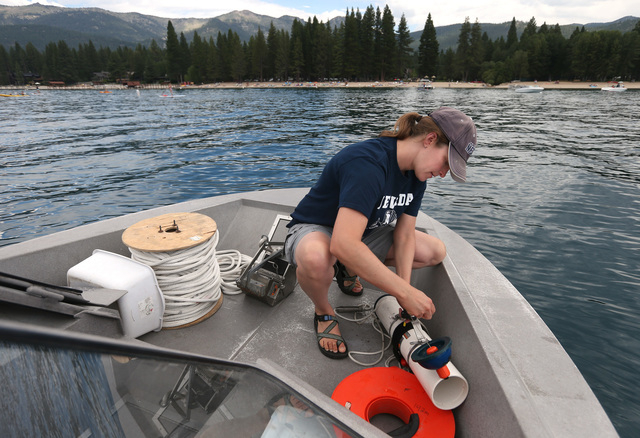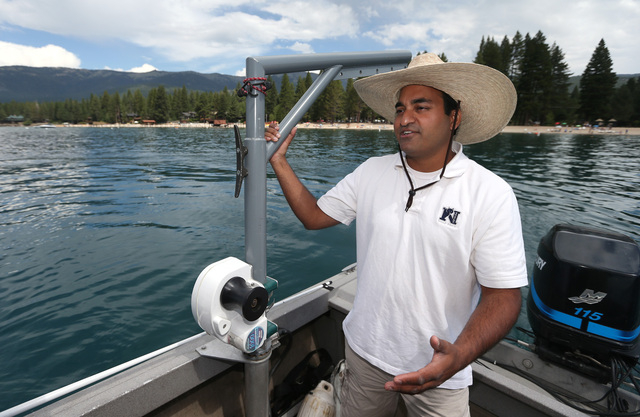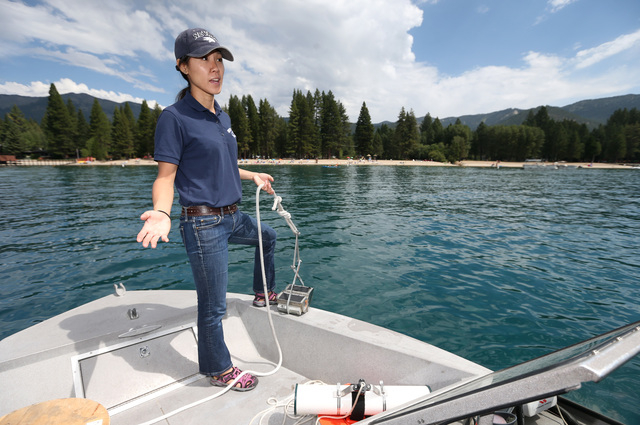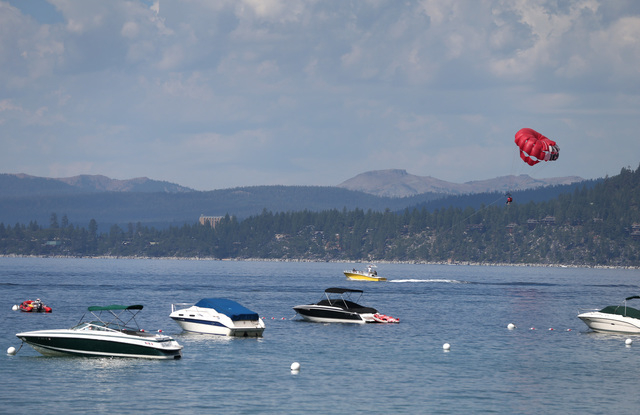Scientists: More money needed to protect Lake Tahoe
INCLINE VILLAGE — Research scientists monitoring the health of Lake Tahoe are finding it harder to obtain the funding they need to continue their work and are calling on politicians to help preserve the national treasure that borders California and Nevada.
The concern was raised shortly before the 18th annual Lake Tahoe Summit, where lawmakers from the two states will meet to discuss policies to maintain and improve the lake’s health and clarity.
The summit will take place at the Valhalla Estate on the south side of the lake Tuesday and will be hosted by U.S. Sen. Dianne Feinstein, D-Calif. The theme and focus this year will be “Drought, Wildfire, and Invasive Species: Confronting the Effects of Climate Change on Lake Tahoe.”
The consensus among the research team is that monitoring the conditions in Lake Tahoe takes energy and dollars, and those dollars are hard to come by. The researchers’ goal of gathering the data is not only to inform the public about the state of the lake but also for lawmakers so that they can create policies that will help preserve it.
“It is a matter of simply convincing our representatives and stakeholders to invest in the program,” said Alan Heyvaert, director of the Center for Watersheds and Environmental Sustainability at the Desert Research Institute.
“To supply what we need to be able to do the work, it has been hard especially lately because the economy is still struggling along, and there just isn’t a lot of extra money to spend. Hopefully the dignitaries will hear that we need some sort of monetary resources to sustain this activity,” he said.
On a recent warm but cloudy morning, researchers showed off the lake’s beauty with a boat tour and talked about their work. Slicing through the bright blue waters off Incline Village, the scientists discussed issues ranging from water clarity to invasive species.
At an elevation of 6,225 feet, the Sierra Nevada lake feeds the Truckee River, the primary source of drinking water for the Reno area. Though there has been significant progress in protecting the 1,600-foot-deep body of water, researchers say the lake’s clarity has been decreasing about 1 foot per year for the past 30 years.
Researchers have also discovered that the lake’s water is warming and it might be over a long term. That is according to a recent study conducted by researchers from UC Davis who also participated in the research project at Lake Tahoe with scientists from UNR and DRI.
“What we see increasing the most are minimum temperatures,” said Nina Oakley, DRI climatologist. “Where we see the greatest upward trends are in overnight lows. Minimum temperatures if you were to plot adjusted for Tahoe City, which has a record dating back to 1906, you see an increasing trend which shows that warming is occurring.”
In previous years the research has been focused on mid-lake conditions and the clarity is starting to stabilize there. However, scientists have started to focus on near-shore conditions and are finding that the water is turning more green than it ever has been. The UC Davis research team has been monitoring the algae on near-shore rocks for about 30 years and has noticed a change in the water color.
More troubling than the temperature changes and water clarity is the fact that non-native species are finding their way into the waters of Lake Tahoe.
Christine Ryan, on the research faculty at UNR, is part of a control program to reduce the population of non-native fish in the lake. So far they have caught more than 60,000 such fish in the past three years, and they plan to go out later again this month to continue the program.
Some of those non-native fish are goldfish, pleco fish and largemouth bass. The goldfish have an average weight of 4 pounds and are 7 to 12 inches in length. Pleco fish, also known as sucker fish, are a common household aquarium fish. Owners typically use them to eat algae to keep their aquariums clean.
These invasive species have managed to make their way to the lake despite the fact that all boats have to be inspected before they can be placed in the water. There are various reasons for this.
“For the goldfish, most likely aquarium dumping, but some fishermen use them as bait as well, which is prohibited. You cannot use live baits that are not from the same body of water,” Ryan said. “Recently a 7-year-old kid found a large dead pleco in a King’s Beach creek. That is a prime example of aquarium dumping because there is no other way of it getting into the waterbed of Lake Tahoe.”
The research team has determined that the changes they are discovering in Lake Tahoe are attributed to human behavior. Heyvaert said the changes might be reversible, but it will take a “collective commitment on both a societal level as well as an individual level.”
Contact Capital Bureau reporter Whip Villarreal at wvillarreal@reviewjournal.com or 775-687-3901. Find him on Twitter: @WhipVillarreal.




















